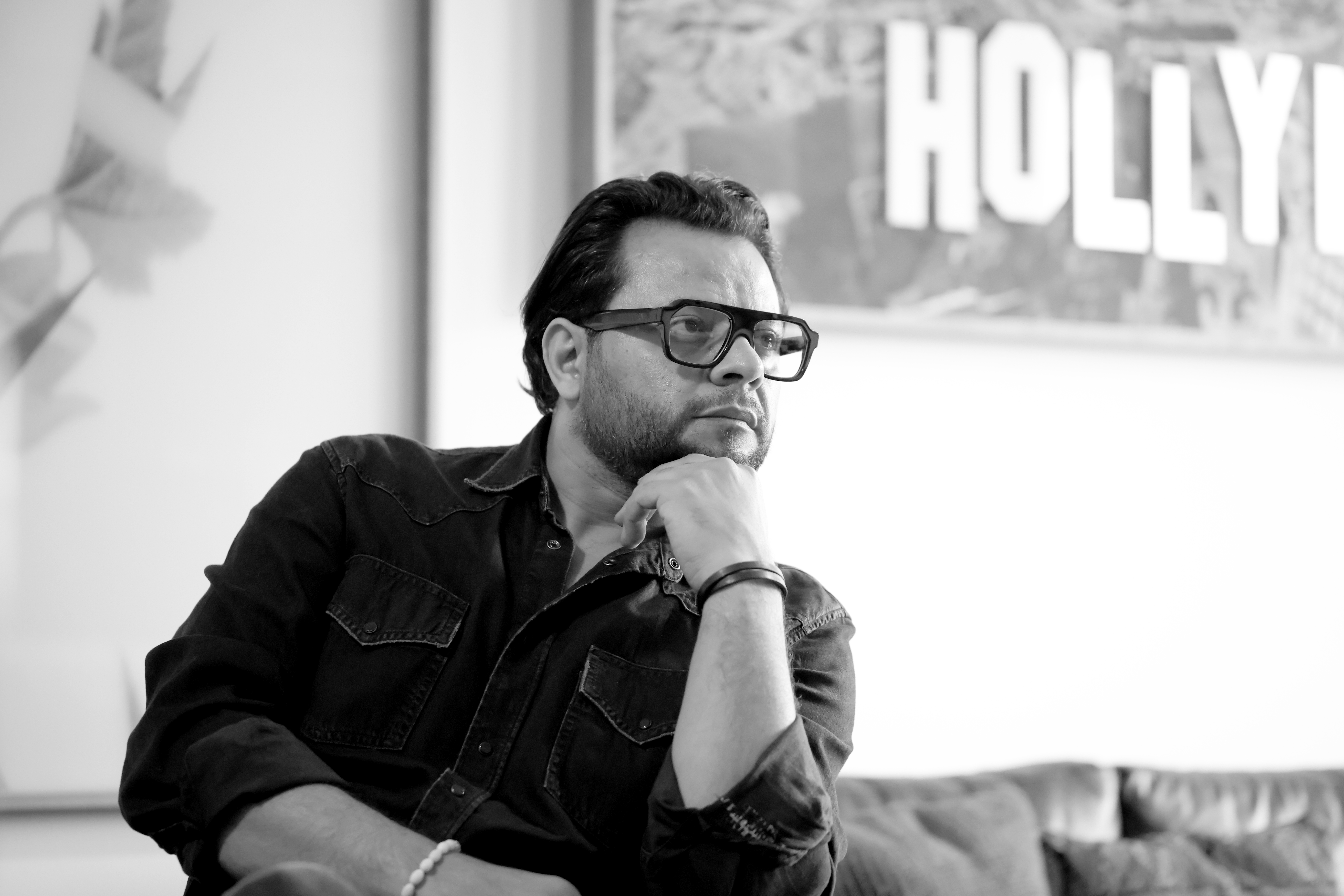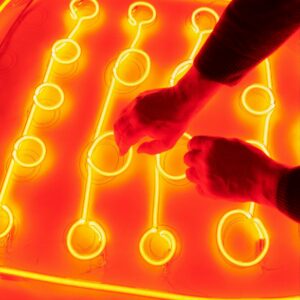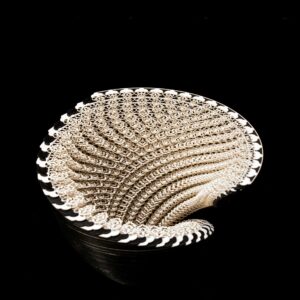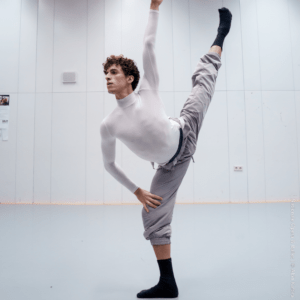Hailing from Gaza, Palestine, Hazem Harb (Instagram), a visual artist, intricately weaves a profound exploration of Palestinian identity into his work. After studies in Illustration and Children’s Book Design in his homeland, Harb refined his craft in Rome. His art delves into themes of the diaspora, evolving borders, and displacement, all guided by meticulous research. Harb artfully integrates historical elements, using old photographs and archived materials in his contemporary pieces, shedding light on the enduring existence of his people. Currently based in Rome and Dubai, he serves as a compelling bridge, harmonizing his Palestinian heritage with the global spaces he navigates, offering a captivating testament to the resilience and cultural richness of his identity.

Take us back to the time when you first discovered comfort in the world of art.
I spent my youth in Gaza drawing and sketching everything that I encountered, from the activities of the merchants in the market to the textures and tones of the fabrics my mum used to work with, she was an avid designer, and I think my first connection to the possibilities of creativity and art. Drawing, and later painting, formed a daily habit and obsession of mine that I wouldn’t lay to rest, eventually I received professional tutelage at the YMCA 1995 in Gaza.
How has your background and upbringing in Gaza influenced the themes and messages you convey through your art? How has your education journey from Gaza to Rome shaped your artistic perspective and enriched your work?
Guided by professors, I earned a residency in Paris in 2004, delving into analogue photography and video. Dr. Carla Pagano’s support secured me a scholarship to study in Rome in 2005, prompting my departure from Gaza for several years. In 2008, I was honoured as the one of the ‘Young Artist of the Year’ by the AM Qattan Foundation. Despite staying in touch with Gaza, I grappled with a sense of abandonment and isolation, prompting me to seek Italian citizenship. In 2010, the loss of my mother and escalating tensions in Gaza heightened my longing to return home. These complex emotions and experiences continue to shape my artistic practice, reflecting the intricate journey of a Palestinian artist navigating between worlds. During the transformative years, from 2006 to 2009, I underwent a profound evolution in my artistic practice, departing from the intimacy of figurative works towards the realm of abstraction.
A pivotal moment arrived with my inaugural solo exhibition, “Is this your first time in Gaza?” held at The Mosaic Rooms in London in 2010. This showcase featured a range of multidisciplinary works that delved into my experiences navigating checkpoints in my homeland, offering an exploration of the regulation of personal freedoms. The momentum continued with my participation in a residency alongside The Delfina Foundation and AM Qattan Foundation in London in 2011, marking a period where my art garnered attention from notable media outlets such as the BBC and Rolling Stone Magazine. This intense phase of artistic exploration coincided with personal challenges, notably my mother’s illness and the tumultuous situation in Gaza. These experiences propelled me into a profound state of mind that significantly influenced my artistic practice. In 2013, I made a significant decision to establish a permanent residence in Dubai, a city that I now consider my adopted home.

How does your art symbolise the enduring existence of Palestinian people?
Similar to my personal journey as an artist in exile, existing between worlds, cultures and communities, my art occupies the spaces in between, endeavouring to establish novel connections and dialogues among seemingly unrelated ideas and moments. By incorporating historical artefacts such as archival images, fragments of maps, coins, and pressed plants, my artwork forms a bridge between the past and present within a contemporary framework.
By bringing these materials to the forefront of the contemporary art sphere, I provide them with a fresh opportunity for interpretation, encouraging viewers to reconsider their significance. In the face of cultural erasure, my collages function as tangible evidence of Palestinian realities, merging diverse concepts that prompt inquiries emerging from a third space.
In your recent work, you moved from collage to charcoal abstraction. What influenced this shift, and why did you choose charcoal on paper for this collection?
As time unfolded, I cultivated my unique approach, delving into the realm of contemporary collage. This practice holds a significant role in my art, emphasising the remediation of archival objects as both an act of resistance and a poignant documentation of the Palestinian experience.
In the midst of profound pain resulting from the atrocities in Gaza, I find myself returning to charcoal on paper after more than a decade. This departure marks a significant shift from the somewhat clinical process of collage, detached from the direct touch of my hand, towards a more visceral approach. The gestural application of charcoal on canvas, a tactile and bodily act, becomes a means to encapsulate my inner sense of loss.

Is there an item showing your Palestinian heritage that you wish to carry with you throughout your life?
A set of keys from a Palestinian home. Every Palestinian in exile carries a set of keys with them, a symbol of their existence, and their will and hope to return to the land.
If you had to sum up your art in just one word, what would that word be?
Resist.

For more stories of art and culture, like this interview with Hazem Harb, visit our dedicated archives.












